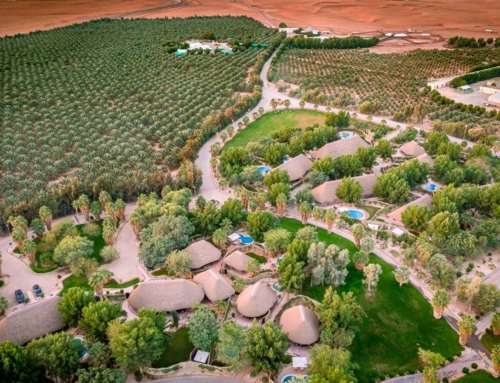
The Lifecycle of MEP Systems in a Luxury Five-Star Hotel
The Lifecycle of MEP Systems in a Luxury Five-Star Hotel
Conclusion;
MEP systems have a confirmed ‘usual’ lifespan. This shall be maintained through routine, scheduled ‘preventive maintenance’ according to the guidelines and manuals
The ‘bath-tub’ model explains the lifespan and potentials during, extented and after, by when a replacement is necessary. Further extending and prolonging the natural and well maintained lifespan will lead to operating cost increase for increasing repairs, failure and operational costs (such as electricity), as newer equipment will be more effective and cost efficient.
Focusing on the variety of pipeline materials used in luxury five-star hotels. Aligned with global standards for optimal performance, safety, and efficiency. This depth of detail aids engineers and facilities managers in planning for maintenance, upgrades, and system longevity, ensuring a high level of operational efficiency and guest satisfaction.
Mechanical, Electrical, and Plumbing (MEP) systems are the lifeblood of luxury five-star hotels, ensuring comfort, safety, and functionality for guests and staff. The lifecycle of each MEP component varies based on material, usage, and maintenance practices. This article delves into the typical lifespans and materials used for various MEP items in a luxury hotel setting. The focus is on key systems such as lighting, fire alarms, and water pipelines.
Global Standards Referenced / ASHRAE, ISO
1. Chillers (Copper, Stainless Steel): Expected lifespan of 23 years, as per ASHRAE standards.
2. Boilers (Steel, Alloy): Typically last 30 years, according to ASHRAE.
3. Air Handling Units (Galvanized Steel): Lifespan of 20-25 years, following ASHRAE guidelines.
4. Ducting (Aluminum, Galvanized Steel): Can last over 30 years, as recommended by ASHRAE.
5. Ventilation Fans (Steel, Aluminum): Generally have a 15-year lifespan, following ISO standards.
6. Pumps (Cast Iron, Stainless Steel): Expected to serve 15-20 years, suitable for HVAC circulation, according to ASHRAE.
7. Cooling Towers (Fiberglass, Galvanized Steel): Usually last 20-25 years, as per ASHRAE.
8. Variable Air Volume Boxes (Steel): Often have a lifespan of 20 years, according to ASHRAE.
9. Heat Exchangers (Stainless Steel, Titanium): Can last 30 years, following ASHRAE recommendations.
10. Thermostats: Typically, last 10-15 years, as outlined by ASHRAE.
11. Exhaust Systems (Steel): 15-20 years, following ASHRAE standards.
12. Refrigeration Equipment (Copper, Aluminum): Typically lasts 20 years, as per ASHRAE.
13. Fire Dampers (Steel): Require annual inspections, replacements dictated by condition (NFPA).
14. Gas Furnaces (Steel, Alloy): Lifespan of 20-30 years, according to ASHRAE.
15. Hydronic Heating Systems (Copper, PEX): Expected lifespan of 20-25 years (ASHRAE).
16. Solar Heating Panels (Copper, Stainless Steel): Generally last 20-25 years (ISO).
17. Steam Traps (Stainless Steel): Have a lifespan of 15-20 years (ASHRAE).
18. Vibration Isolators (Rubber, Steel): Should be checked every 5 years, replaced as necessary (ASHRAE).
19. Air Filters: Need to be replaced annually or as needed (ASHRAE).
20. Energy Recovery Systems: Designed to last 20 years (ASHRAE).
21. Humidifiers: Generally last 10-15 years (ASHRAE).
22. Dehumidifiers: Expected lifespan of 8-15 years (ASHRAE).
23. Compressors (Steel, Cast Iron): Typically last 15-20 years (ASHRAE).
24. Condensers (Copper, Aluminum): Usually last 20-25 years (ASHRAE).
25. Air Curtains: Have a lifespan of 7-10 years (ASHRAE).
26. HVAC Controls: Designed to last 15-20 years (ASHRAE).
27. Radiant Floors (PEX, Aluminum): Can last 35-40 years (ASHRAE).
28. Chilled Beams (Copper): Expected lifespan of 15-20 years (ASHRAE).
29. Fan coils (Copper, Aluminum): Generally last 15-20 years (ASHRAE).
30. HVAC Duct Insulation: Typically lasts 20-25 years (ASHRAE).
Additional Mechanical Systems
1. Swimming Pools:
o Structure (Concrete, Fiberglass): Concrete pools may last over 50 years; fiberglass structures around 25-30 years.
o Piping (PVC, Stainless Steel): Lasts 25-35 years depending on maintenance and chemical balance.
o Pumps (Stainless Steel, Bronze): Typically, last 8-12 years but require regular maintenance.
Chemical Dosing Systems: Generally last 10-15 years, depending on precise dosing and regular maintenance.
2. Chilled Water Systems:
o Chilled Water Pipeline (Copper, HDPE): Designed to last 25-40 years, depending on environmental conditions and maintenance.
o Chilled Water Pumps (Cast Iron, Stainless Steel): Typically operate effectively for 15-20 years with proper maintenance.
o Condenser Water Pumps (Bronze, Stainless Steel): Expected to last 20-25 years with routine maintenance.
3. Kitchen Ecology Units: These units, crucial for maintaining air quality, typically last 10-15 years but require regular filter replacements and fan maintenance.
4. Smoke Extraction Fans (Steel, Aluminum): Vital for safety and regulatory compliance, these fans are expected to last 15-20 years, subject to regular testing and maintenance.
Electrical Systems / Global Standards Referenced: IEC, IEEE
1. LED Lighting: Up to 50,000 hours (IEC).
2. Emergency Lighting: Test annually; battery life 5-7 years (IEC).
3. Fire Alarm Systems: Replace every 10 years (NFPA).
4. Emergency Generators: 20-25 years (ASHRAE).
5. Switchboards: 30 years (IEEE).
6. Circuit Breakers: 30-40 years (IEC).
7. Wiring: Up to 50 years, inspect every 10 years (IEC).
8. Energy Management Systems: Software updates every 5 years (ISO).
9. UPS Systems: Battery replacement every 3-5 years (IEEE).
10. Electrical Panels: 25-40 years (IEEE).
11. Transformers: 25-30 years (IEEE).
12. Voltage Regulators: 20-25 years (IEEE).
13. Power Cables: 25-40 years (IEC).
14. Light Switches: 10-20 years (IEC).
15. Outlet Receptacles: 15-25 years (IEC).
16. Photovoltaic Systems: 25-30 years (IEC).
17. Motion Sensors: 10-15 years (IEC).
18. Dimming Systems: 10-15 years (IEC).
19. Security Cameras: 5-10 years (IEEE).
20. Access Control Systems: 10-15 years (IEC).
21. Data Networks: 5-10 years, upgrades as technology evolves (IEEE).
22. Telephone Systems: 10-15 years (IEEE).
23. Audio/Visual Systems: 5-10 years (IEEE).
24. Public Address Systems: 15-20 years (IEC).
25. Lightning Protection Systems: Inspect annually (NFPA).
26. Surge Protection Devices: 5-10 years (IEEE).
27. Fiber Optic Cables: 30-50 years (IEEE).
28. Grounding Systems: Inspect annually (IEEE).
29. Emergency Stop Systems: 10-15 years (IEC).
30. Building Automation Systems: Hardware 15-20 years, software updates every 5 years (ASHRAE).



